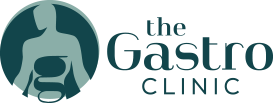Fatty Liver (NAFLD)
Overview
Nonalcoholic fatty liver disease (NAFLD) occurs when you ingest more fat and calories than your liver can process. Eventually, simple fats build up in the liver cells, causing the risk of liver damage. Fatty liver is usually associated with obesity, alcoholism, and cirrhosis of the liver. Fatty liver can be associated with obesity, diabetes, elevated triglyceride, excess alcohol and can lead to cirrhosis of the liver. Occurs when fat is deposited in the liver due to other causes than excessive alcohol use. NAFLD is the most common liver disorder in Western industrialized nations and is now one of the leading causes of cirrhosis. (U.S.A.)
symptoms of fatty liver disease
- Fatigue
- Obesity
- Genetics
- Jaundice – yellowing of the skin and in the whites of the eyes
- Urine color – unusually dark due to toxins
- Skin changes – in addition to jaundice, discoloration in the neck (swollen glands). Possibly broken blood vessels in the face, or spider veins on the chest, back, and shoulders. Also the hands might be affected, red palms and nail beds turning white.
- Abdominal pain – discomfort in the center or right upper portion of the abdomen.
- No symptoms – at risk people should be proactive. No yo-yo dieting, excessive alcohol, weight loss and exercise.
- Fluid retention – an engorged abdomen, ascities. The fluid retention may also be found in the legs and feet.
- Muscle wasting – usually found in the hands. The tendons shrink, the fingers curl and muscle tremors set in. This usually happens when the liver’s unable to metabolize proteins, which also can lead to the increase of fractured and broken bones.
diagnosis of fatty liver disease
- You physician will take your family history and perform a complete exam
- You physician will order some testing, blood, ultrasound, CT, MRI
- Your physician may refer you to a gastroenterologist who may order additional testing
- Liver biopsy – is required at times to establish a diagnosis, prognosis and treatment plan
- Will order laboratory studies and imaging such as ultrasound or CT scan
treatment of fatty liver disease
- Lifestyle changes
- Drug therapy
- Surgery – Bariatric surgery is at times recommended for very overweight individuals. New options include ReShape – 2 gastric balloons that are placed in your stomach for six months that can assist with weight loss.
